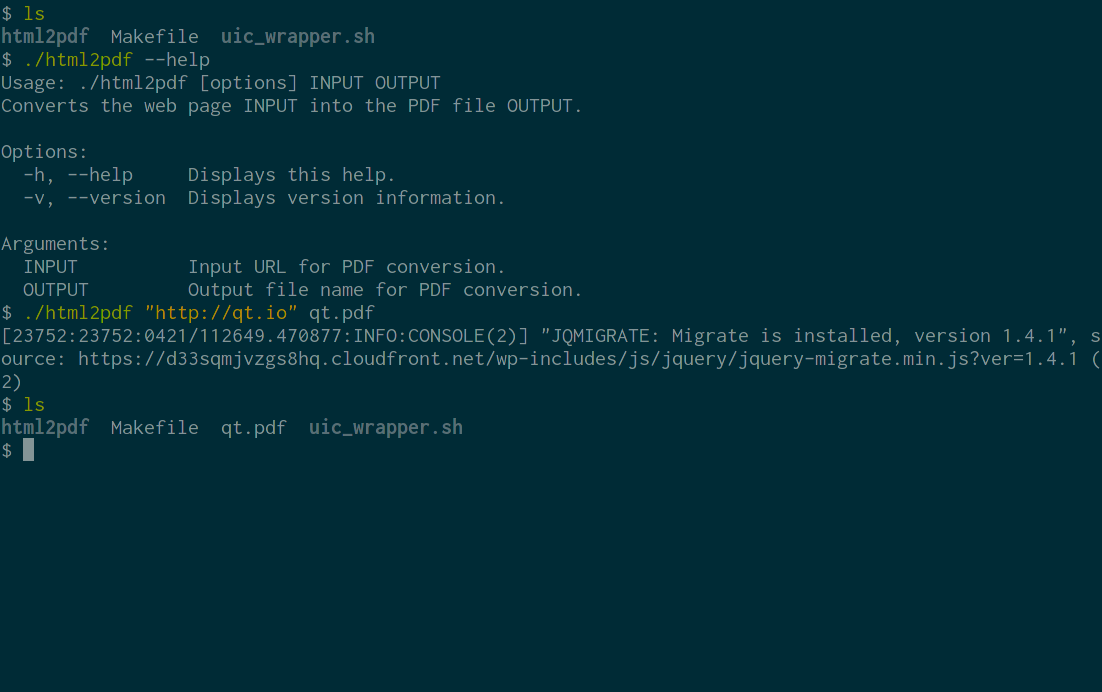WebEngine Widgets Html2Pdf Example¶
Converts web pages to PDF documents using Qt WebEngine.
Html2Pdf demonstrates how to use Qt WebEngine to implement a command-line application for converting web pages into PDF documents.
Running the Example¶
To run the example from Qt Creator , open the Welcome mode and select the example from Examples. For more information, visit Building and Running an Example.
The Conversion Process¶
In order to convert a web page into a PDF document we need to:
Create a
QWebEngineView.Tell the
QWebEngineViewto begin loading the target URL and wait for it to finish.Tell the
QWebEngineViewto begin converting the loaded page into a PDF file and again wait for it to finish.Once the conversion is finished, exit the program.
This process is encapsulated in the Html2PdfConverter class:
In the constructor we create the QWebEngineView and connect to its loadFinished and pdfPrintingFinished signals:
The run() method will trigger the conversion process by asking QWebEnginePage to start loading the target URL. We then enter the main event loop:
After the loading is finished we begin PDF generation. We ask the printToPdf method to write the output directly to disk:
Once we receive the signal that the PDF conversion has finished, all that remains is to report potential errors and exit the program:
The Main Function¶
Our main function is responsible for setting up a QApplication and parsing command line arguments:
Note that to use Qt WebEngine Widgets we need to create a QApplication and not a QCoreApplication , even though this is a command line application.
© 2022 The Qt Company Ltd. Documentation contributions included herein are the copyrights of their respective owners. The documentation provided herein is licensed under the terms of the GNU Free Documentation License version 1.3 as published by the Free Software Foundation. Qt and respective logos are trademarks of The Qt Company Ltd. in Finland and/or other countries worldwide. All other trademarks are property of their respective owners.

